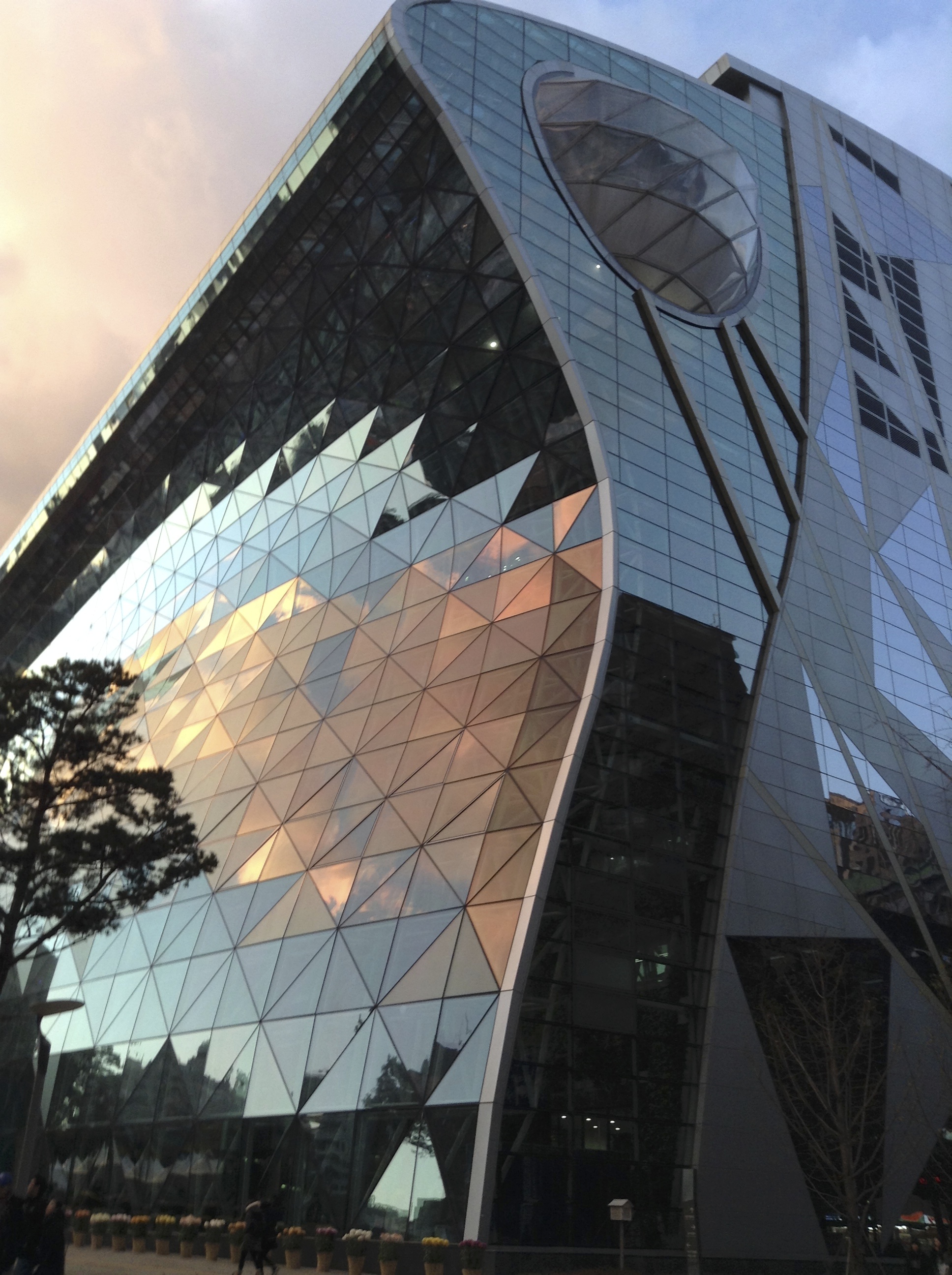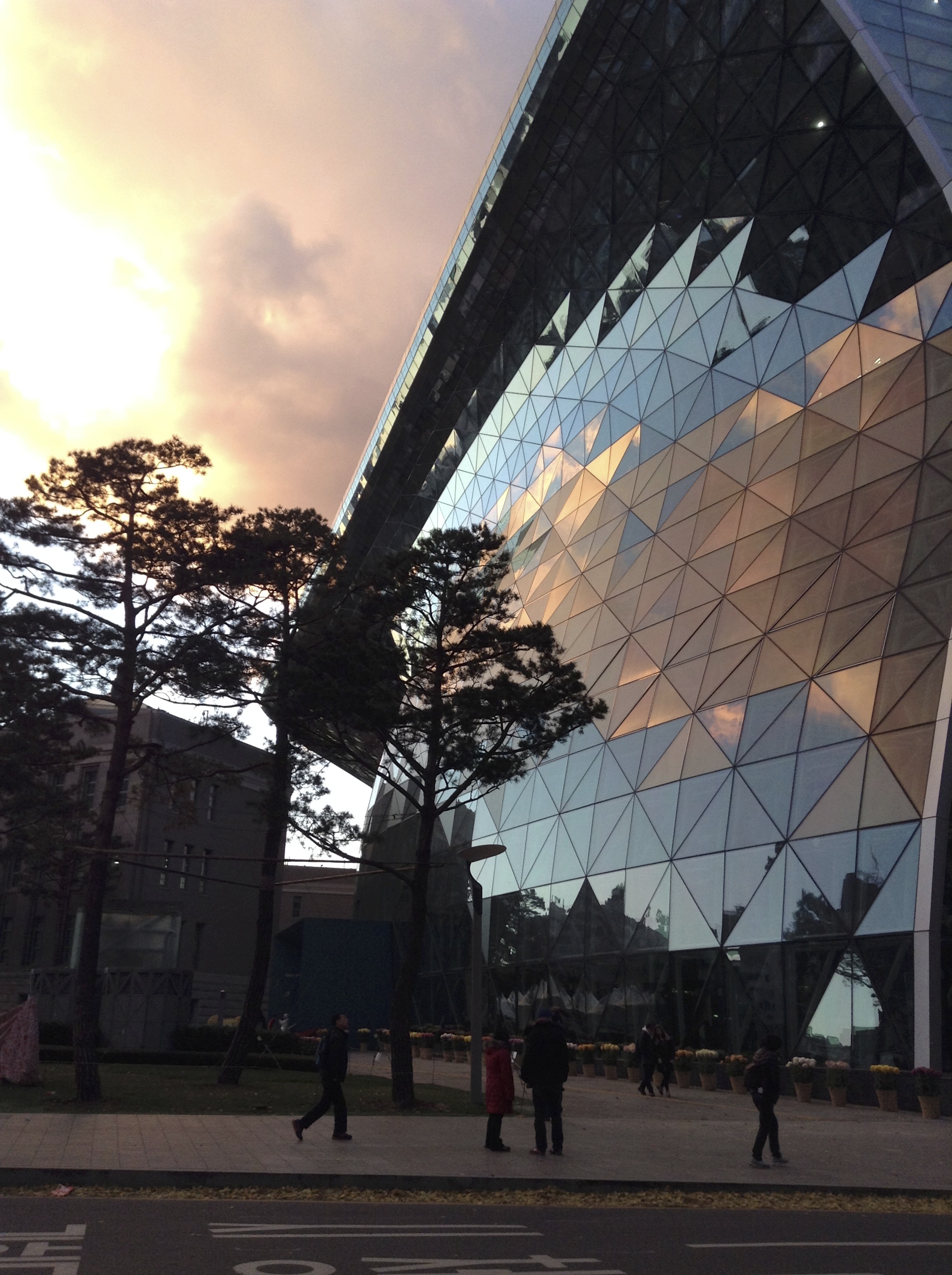Tiny little sleep
A last minute everything
Michigan so soon
April Fools You In Korea
I can only imagine how my middle school teachers would have reacted to some of the tall tale-ish pranks my students brag of --- especially of the prank every student holds in such high regard. Retold in several of my classes, the classic prank is one in which the students stack their shoes on the windowsills and then lay outside, face down, in the school yard.
Suicide.
It's such a horrifyingly casual topic in Korea. And students find it funny. They talk about "doing a suicide" nearly everyday in some context or another. At first it's shocking but it's not surprising. Suicide is sewn into the culture of Korea. Shamed Korean leaders commit suicide as a "noble" way of stepping out. Humiliated actresses and reality T.V. stars do it too. The body count under Mapo Bridge increases every year after students receive the results of their "suneung" college entrance exam, which literally determines their future rank in society.
I almost escaped April Fools unscathed. Unfortunately, my obsession with chatter surrounding The Avengers 2 taping in Seoul left me at the mercy of my own gullibility. (I have a tiny, tiny crush on Iron Man, or really, the man beneath the suit.) I ran across an article posted on Facebook suggesting Joss Whedon had moved the set to Japan after the crew discovered a dead body under the Mapo Bridge.
The relocation was fiction, the discovery of the dead body was fact.
And I totally fell for this picture, too. Photograph courtesy of ZenKimchi.com
Catching Up on a Lifetime in Three Days
Korean Families Reunite
Eighty elderly South Koreans, many in deteriorating health, will see their long-lost siblings and cousins at Kumgang mountain in North Korea this afternoon. The highly anticipated occasion is full of raw emotion for the participants who were ripped apart from each other during the Korean Civil War some 60 years ago.
The weeks leading up to today have been nerve-wracking for members on both sides of the Demilitarized Zone (DMZ), as plans for a similar meeting in September 2013 were thwarted by the North Korean government in retaliation to supposed "reckless confrontations" imposed by the South Korean administration. This is the first family reunion held since the program was suspended in 2010 after North Korea shelled Yeonpyeong Island, raising tensions to their highest since the armistice in 1953.
The participants have just three days to catch up on the past 60 years that they've spent on opposite sides of the Korean peninsula. Everyday life has likely been much easier for South Koreans, who are prohibited from bringing expensive gifts to the reunion. Instead, they are bringing the essentials their estranged families may not have access to like warm coats and medicine. Many will also bring the coveted Choco Pies as gifts and fresh fruit they hope to share together in their celebrations.
For the families reuniting at Kumgang, this weekend will be their last together. It is a bittersweet reunion, but those attending know how lucky they are. Just last year, 3,800 South Koreans who had applied to reunite with their family members in North Korea passed away without ever getting the chance. Amnesty International claims the list is some 70,000 names long.
During an orientation yesterday, the South Korean participants were instructed to not speak of the war that tore them apart because conversations will likely be monitored. But for these families, the little time they have together will surely be spent remembering their families and their lives together, for the last time ever.
Couple's Wear in South Korea
Seoul isn't the fashion capital of the world (much less of Asia) but its couples do have a distinct way of showing their loyalty to one another, a trend that is spreading throughout the continent. It's called "couples-wear" or "couples look" (keo-peul-look) and it's hard to miss. Korean couples forego promise rings instead purchasing matching clothes--from shoes to outerwear and even underwear; swooned sweethearts wear matching apparel on the slopes, the beach, and everyday on the street.
It's easy to pass off the trend of couples fashion as simply another "cute" product of Asian culture (you know "Hello Kitty!") but the origin may be much deeper. The Korean population is one of the most ethnically homogenous in the world. Current statistics show that 98% of the citizens on the southern half of the peninsula are ethnically of pure Korean descent. Immigration laws are tight and interracial marriages are not readily accepted, both resulting from a painful history under Japanese rule. Since Korean independence, the ideology of "one blood" has prevailed; the concept of dressing alike mirrors this sense of oneness.
In a society that discourages public displays of affection, matching outfits are a way for couples to feel close and and express their affection. While the fashion trend is most popular among younger pairs, it's not uncommon for couples of all ages to buy a pair or two of matching shoes. Department stores and online apparel shops like honeyplaza.co.kr specialize in his and hers outfits. In a consumer's nation like South Korea you don't have to look far to find a couple's tee but it can be difficult to find something original. Trends and styles featured on Korean dramas spread like wildfire throughout the small nation. Couples looking for unique couple's wear should look toward other Asian nations like China and Taiwan, where the trend is growing quickly.
It's safe to assume that couples-wear will remain on the other side of the Pacific; most North American couples would find the idea outright cheesy and childish. However, one should be wary of assumptions in fashion. Its constant, subtle influence has a way of altering our perception of beauty, sometimes drastically. Soon you may be matching your lover, too.
12 Months of Love in South Korea
South Korean couples have no shortage of romantic days to celebrate their love. As Americans help push Hallmark into the black this Valentine’s day, Koreans will be celebrating their second “couple’s” holiday of 2014. Korean culture itself is largely “couple-centric” with businesses big and small profiting greatly. On any given day in Seoul you’ll see pairs crowded into “couple’s-only” cafes, sporting matching outfits (from head to toe, often including underwear, too), or chatting via private apps like Between, a Korean application created especially for couples that’s gaining popularity elsewhere, too. And with the fourteenth of every month dedicated to the celebration of love, it’s easy to understand the pressure singletons face.
Photograph by Phillip Lee @ pdhlee.blogspot.com
Every January, couples exchange daily planners or calendars which are useful for recording the auspicious 100th day anniversary and the many more they hope will follow. On Valentine’s Day, women buy gifts for their significant others and men reciprocate on March fourteenth, also known as “White Day”. April fourteenth is a much welcomed break for the loveless who celebrate their lack of romance together, feasting on jjajangmyun (짜장면), or Chinese noodles in black bean sauce. Quite apropos, the day of feasting and mourning is called “Black Day”. In May, flower shops and curry restaurants delight in “Yellow Day” as couples wear yellow and exchange roses. Singles can celebrate too by eating yellow Korean curry.
Jjajangmyun noodles fried meat and rice
On the fourteenth of June you might catch a rare public display of affection. Elder Koreans readily shun public acts more intimate than hand holding, a norm reinforced by informational videos playing throughout Seoul’s extensive subway system. So if there is a day for making-out in public, “Kiss Day” is it. In July, jewelry retailers look forward to an increase in sales as couples exchange silver tokens of love and the truly serious lovers meet the parents. The fourteenth of August helps secure Soju as the world’s most consumed alcohol as Koreans celebrate “Green Day” in parks by consuming the rice-based liquor, traditionally packaged in a green bottle. Studies have concluded that South Koreans out drink every other nation. It’s also a pretty safe bet that they dominate in selfies. To celebrate picture taking, September fourteenth is “Music and Photo Day”. In the evening, couples meet up with friends to celebrate at a noraebang (노래방) or singing room. The October holiday is celebrated with wine and in November couples celebrate with a “dinner and a movie” date. They’ll also celebrate the very commercial “Peppero Day” on November eleventh (11/11) when retailers promote the thin chocolate covered cookie sticks which resemble the numerical date. And last, and least commercial of them all, December fourteenth is a celebration of hugs. But what retailers miss out on earlier in the month they will more than make up for at Christmas, very much a couple’s holiday in South Korea.
The Big Wave at Seoul's City Hall
Seoul's new city hall is impressive. The glass structure is gorgeous.
It's also possibly a huge slap in the face for the Japanese.
From the inside out, Seoul's new City Hall is a work of art. The interior walls are shrouded in green leafy flora that climb from the ground to the ceiling; the exterior, made solely of windows, provides a gorgeous light. But the new building constructed in 2012 has drawn criticism stemming from its perhaps not-so-innocuous shape.
The actual city of Seoul is landlocked so it's interesting to note that City Hall looks a lot like, well, a tidal wave. And while the building's exterior reflects the beautiful skyscapes of city, its glass curves may insinuate uglier intentions. Many critics of the new structure believe its wave-like mold was created as a smug stab at the Japanese who are still struggling to recover from the 2012 Tsunami.
Relations between the two countries have remained somewhat tense since the Japanese invasion and subsequent 35 year rule on the Korean peninsula; the Japanese government has failed to apologize for several travesties against the Korean people, including the unpleasant history of comfort-women.








